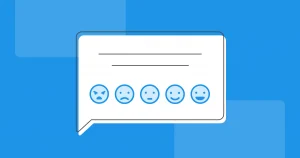I recently bought a high-end television from a big box electronics retailer for my new home. And since installing it, I have become a huge fan of Sony’s OLED screen.
Mounting the large screen was complicated, and I spent a good bit of time at the store planning the installation with a very knowledgeable sales rep.
The problem started after returning home that night and realizing that I had misjudged the material into which the mount would be fastened.
The next day, I called the store using the number listed for their location. Realizing that the call had been routed to their national call center, I asked if I could talk to the store since I needed to talk to the rep with whom I had planned out the installation.
For some reason, they were unable to do that but said that if I leave my name and number, the installers would call. By the end of the next day, I had received no callback. So I tried again, but got the same result, and again after 24 hours, had received not call.
I finally got someone who said, “Look, the company decided a while back to remove phone access to store personnel. It is impossible to reach the people in the store with whom you worked. Sorry.” She agreed that it was an unfortunate decision.
The next day I drove to the store, which was not exactly close by. The first thing I said to my rep as I approached the counter was, “What’s up with not being able to call you?” He laughed and admitted that it is a silly policy.
The problem I’m describing is much more prevalent than with just this chain. I’m picking on them because they are my most recent offender.
Technology has made us lazy.
We send identical marketing emails to millions of people all at once rather than target email to certain individuals or at least small common recipients. We direct our support to a few web pages that may or may not solve a customer’s specific problem. And we prevent direct personalized contact with a specific human in favor of web pages, chatbots, or in this chain’s case, a centralized call center.
Yes, these replacements are cheaper in the short term. But what are the results over the long term?
Over the long run, boomers like me will give way to Gens X, Y, Z and beyond. They will have grown up talking to computers and to humans reading scripts who sound like computers. My 21 year-old son, however, complains as well about the demise of human connection when trying to get support.
I believe that technology can improve customer support, but it is still in its infancy. It feels very much like we are in the learning stage of how to use technology to communicate and support customers without compromising the relationship.
I recently read a report listing the advantages of automated customer support. What I found interesting was that almost all of the “advantages” benefit the provider rather than the customer. Some of them included…
1. Reducing customer service costs
There is a reason that this is number 1. And yes, those cost reductions theoretically trickle down to the customer, but do they in a material way?
2. Enhances human interactions at key touch points
The point of this is that by the time a human gets involved, they are more aware of the problem. I can’t help thinking about automations that ask you speak your name, number, and other information only to be asked that same information from the rep once they get on line.
Maybe there is some technical advantage in that process to the support system, but it doesn’t appear that way to the caller.
3. Improves efficiencies and speed to value
The claim here is that customers receive help with reduced response times. How many times have you been on hold for 15 minutes or longer listening to the repeated phrase stating how important your call is to them?
I make a lot of support calls for services and technology products, and it doesn’t feel like technology is shortening time to reach someone.
4. Allows for 24/7 support
That is true, but what kind of support? Web pages and chatbots repeating the same scripted questions over and over?
5. Establishes a uniform tone and voice
Who really cares about that besides your own marketing people?
6. Minimizes human error
While robots can theoretically perform without error, what if I don’t want to engage with a robot? Is the automated elimination of error more valuable than the benefit of human interaction. Not to me.
Some solutions
Instead of focusing on the reduction in short-term costs and round the clock access to web pages and chatbots which may or may not solve your customer’s problems, consider:
- Build your system to connect callers to live agents after no more than 3 minutes.
- Include the option for live chat and provide live chat after hours – no need for 24/7, just time beyond normal business hours.
- Connect your initial phone screening to your live agents so that customers only have to give their personal credentials once. This will save time and demonstrate that your systems and people are integrated.
The last point is to hire reps that are intelligent enough to think on their feet rather than be locked into a verbatim script recital.
Think about the legendary service that built the apparel brand Zappos. Their tag line is: To live and deliver WOW.

Their customer service people are real human beings whose calls are not timed or judged by efficiency. The primary purpose of their support is service.
With easily found 24/7 phone and live chat support along with a very robust FAQ section, they understand the bottom line benefit of personalized customer support.
As you contemplate your next cost savings tactic that further distances you from your customers, think instead about the benefit your brand might receive by investing in getting closer to your customers and their post-sale needs.




